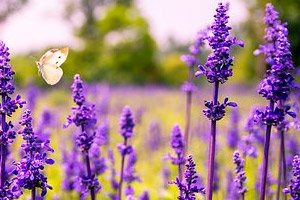
All iLive content is medically reviewed or fact checked to ensure as much factual accuracy as possible.
We have strict sourcing guidelines and only link to reputable media sites, academic research institutions and, whenever possible, medically peer reviewed studies. Note that the numbers in parentheses ([1], [2], etc.) are clickable links to these studies.
If you feel that any of our content is inaccurate, out-of-date, or otherwise questionable, please select it and press Ctrl + Enter.
Sage for bronchitis coughs
Medical expert of the article
Last reviewed: 03.07.2025

A plant that is familiar to everyone for its anti-inflammatory and general strengthening effect. And although the herb does not have an expectorant effect, it is often included in chest infusions to relieve coughs and combat bacterial pathogens of bronchitis. Sage has an antibacterial effect against staphylococci and streptococci.
 [ 1 ]
[ 1 ]
Active ingredients
Pharmacological group
Dosing and administration
To recover from bronchitis as quickly as possible, you need to drink sage tea 3 times a day. Pour a glass of boiling water over 1 tablespoon of dry grass and leave for a quarter of an hour. The daily dose is 1 glass.
To relieve cough, it is recommended to drink sage infusion with milk. The ingredients are taken in the same proportions and infused for an hour, then the composition is mixed in equal proportions with milk. Take warm ½ glass 3 times a day before meals.
Contraindications
Although sage seems to be a completely safe herb, it is not recommended for use in case of individual intolerance, epilepsy and convulsive readiness, acute nephritis. It is not advisable to take the herb during pregnancy and lactation without consulting a doctor. Children can be given medicines with sage no earlier than 5 years of age.
Sage is not suitable for treating acute, hacking coughs.
Side effects sage
Side effects of the herb are reduced to allergic reactions due to hypersensitivity. Overdose may cause irritation of the mucous membranes of the throat and bronchi.
 [ 4 ]
[ 4 ]
Storage conditions
Flowers (flowering tops of the plant) and leaves of sage are harvested for medicinal purposes. Collection of plant materials is possible in 2 stages: in June-July (flowers and leaves) and in September (leaves and seeds). The "harvest" from plants of the first year of life is collected only in early September. You can tear off only the tops of the plants and leaves along the stem with your hands or mow the grass with a scythe and remove the hard stems from the dry raw material.
Drying sage is recommended in dark and warm rooms with good air access. Leaves and flowers are laid out on a flat surface and periodically mixed. Mown shoots are tied into small bunches and hung. In a dryer, the raw materials are dried at a temperature of no higher than 35 degrees.
Glass jars, cardboard boxes, cloth bags, paper bags can be used to store dry raw materials. Medicinal raw materials can be stored for 2 years.
 [ 7 ]
[ 7 ]
Attention!
To simplify the perception of information, this instruction for use of the drug "Sage for bronchitis coughs" translated and presented in a special form on the basis of the official instructions for medical use of the drug. Before use read the annotation that came directly to medicines.
Description provided for informational purposes and is not a guide to self-healing. The need for this drug, the purpose of the treatment regimen, methods and dose of the drug is determined solely by the attending physician. Self-medication is dangerous for your health.

